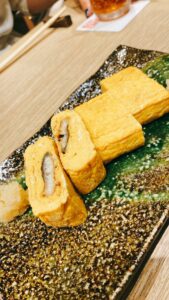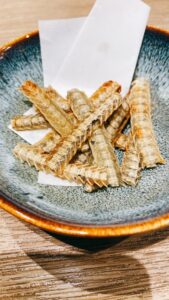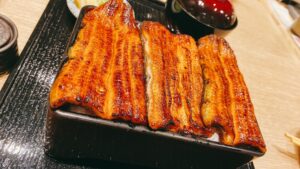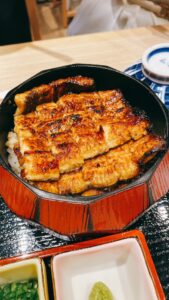Discovering the Delights of Japanese Eel Cuisine
Tomoya Kurokawa
Yesterday, I went out with a colleague to enjoy one of Japan’s most treasured culinary experiences: eating unagi, or freshwater eel. Unagi has long been considered a special dish in Japan, both for its rich flavor and for the energy it provides. After our meal, I felt refreshed and revitalized—a reminder of why unagi has been cherished for centuries.
We tried a variety of traditional dishes, each showcasing eel in a different way:
Umaki – A delicate rolled omelet filled with tender pieces of eel. The sweetness of the egg pairs perfectly with the savory richness of the unagi.

Uzaku – A refreshing dish made with grilled eel and cucumber, dressed lightly with vinegar. It balances the richness of eel with a crisp, cooling taste.

Hone-senbei – Crispy eel bones, deep-fried until crunchy like crackers. It’s a unique snack that pairs well with sake or beer.

Unajū – The classic presentation of eel: grilled fillets glazed with a sweet soy-based sauce, served over rice in a lacquered box. On this occasion, I was fortunate to enjoy two versions:
The standard unajū, with its deep, smoky flavor.

A seasonal specialty featuring “shinko unagi” —young eel, prized for its softer texture and delicate taste.

Hitsumabushi – A specialty from Nagoya. The eel is finely chopped and served over rice, eaten in stages: first as it is, then with condiments, and finally as a comforting “ochazuke” by pouring hot broth or tea over it.

Each dish highlighted a different side of unagi—sometimes rich and bold, sometimes light and refreshing. What unites them all is the belief that unagi restores energy and stamina. Traditionally, it is eaten in midsummer to combat fatigue, but truly, it is enjoyed year-round for both taste and vitality.
Our dinner reminded me not only of the variety within Japanese cuisine, but also of the cultural importance placed on food that nourishes both body and spirit. If you ever visit Japan, trying unagi in its many forms is an experience not to be missed.
